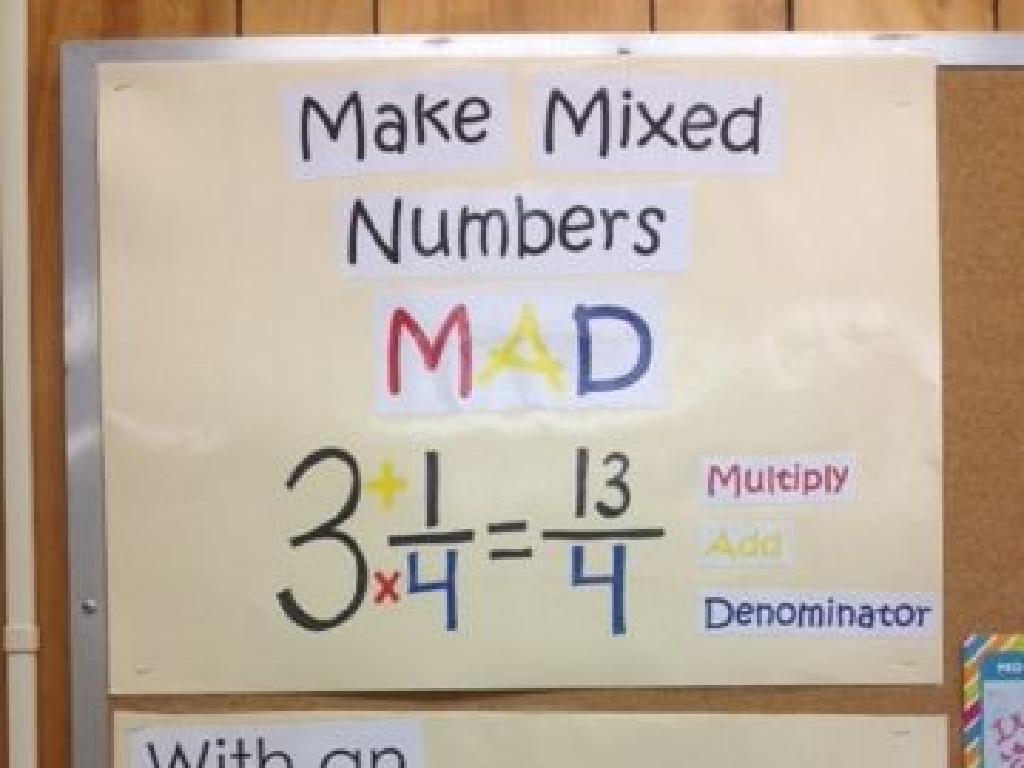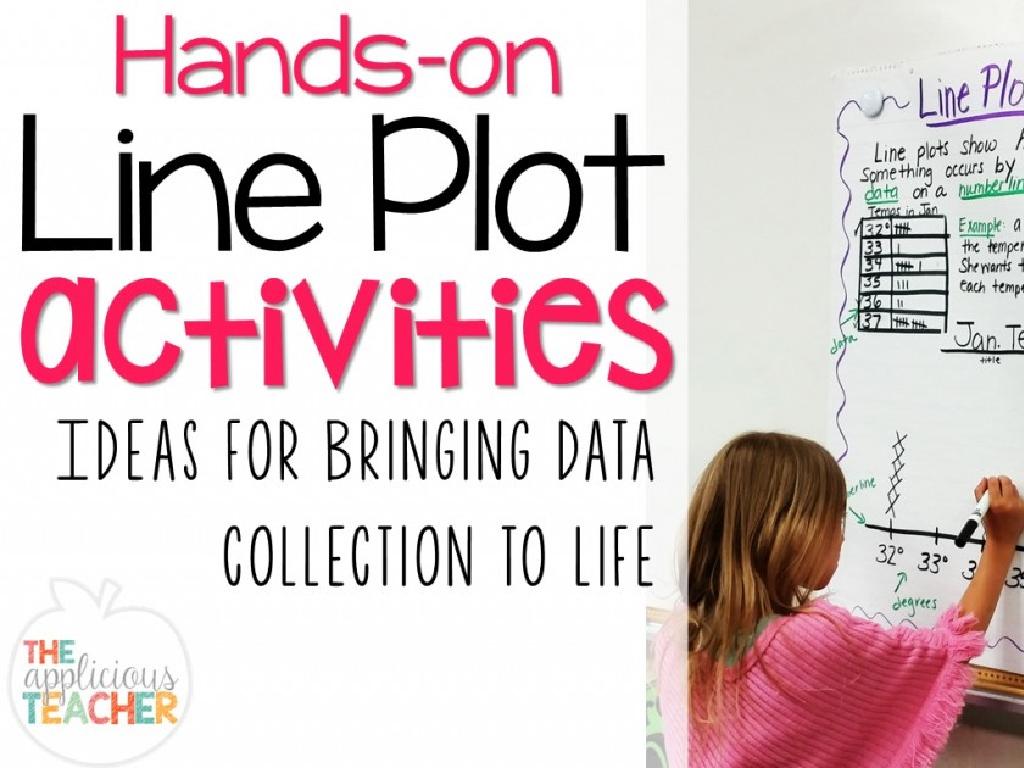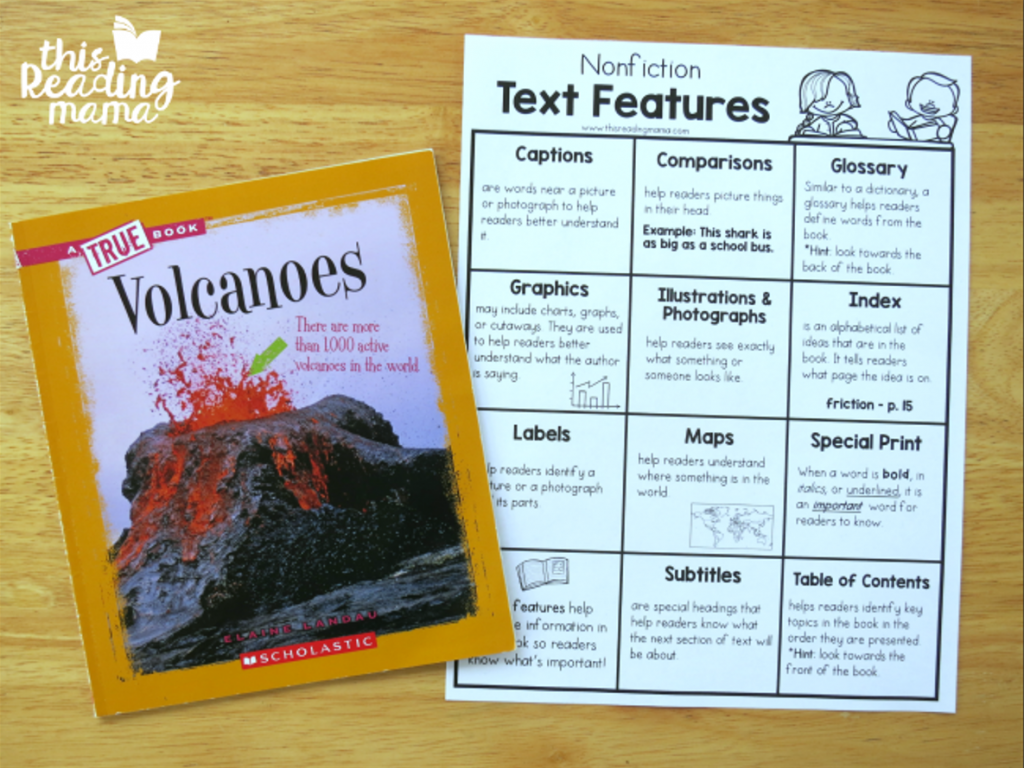Complete The Addition Sentence - Sums Up To 10
Subject: Math
Grade: Kindergarten
Topic: Addition Up To 10
Please LOG IN to download the presentation. Access is available to registered users only.
View More Content
Welcome to Addition!
– Greetings, young mathematicians!
– Adding numbers is fun
– We’ll add numbers to get bigger numbers
– Making sums up to 10
– Learn to combine numbers to total 10
– Practice with examples
– Use objects like blocks or fingers to add
|
This slide is designed to introduce kindergarten students to the concept of addition. Start by greeting the students warmly to create an inviting learning atmosphere. Explain that addition is the process of combining two or more numbers to make a new, larger number. Emphasize that they will be learning to add numbers together to reach sums of up to 10, which is an important foundational math skill. Use tangible examples like blocks, fingers, or drawings to help them visualize the addition process. Encourage participation by asking them to try simple addition problems using objects they can touch and count. This hands-on approach will help solidify their understanding of addition.
Understanding Addition: Sums Up to 10
– Addition combines numbers
– Like adding 2 apples + 3 apples
– Adding finds total amount
– How many apples do we have now?
– Practice with numbers 1-10
– Find sums that make 10
– Example: 4 + 6 equals what?
|
This slide introduces the concept of addition to Kindergarten students. Start by explaining that addition is like putting together items, such as apples, to find out how many there are altogether. Use simple, relatable examples to illustrate this point. Emphasize that when we add, we combine the numbers to find the total count. Encourage the students to practice with small numbers, focusing on combinations that add up to 10. Use hands-on activities like counting objects or using fingers to help them visualize the concept. The goal is for students to become comfortable with the idea of addition and to recognize number pairs that combine to make 10.
Learning Addition: Symbols and Sums
– The plus sign (+) means add
– The equals sign (=) means total
– Example: 4 + __ = 10
– What number do we add to 4 to make 10?
– Let’s find the missing number!
– Use counters or fingers to add up to 10
|
This slide introduces the basic symbols used in addition for kindergarten students. Start by explaining the plus sign (+) and the equals sign (=), which are fundamental to understanding addition. Use clear and simple language to ensure comprehension. For example, demonstrate with objects like blocks or fingers how 4 plus another number equals 10. Encourage the students to use physical objects or their fingers to count and find the missing number that completes the addition sentence. This hands-on activity will help solidify their understanding of addition and the concept of ‘sums up to 10’. Make sure to walk around the classroom to assist any students who may need help with the concept.
Let’s Add Together: Sums Up to 10
– Example: 2 apples + 3 apples
– How many apples do we have in total?
– Count all apples to find sum
– We add 2 and 3 to find the sum
– Adding gives us a total number
– Addition combines quantities into one total
– Practice counting together!
|
This slide introduces the concept of addition as a means to find the total number of items. Start with a simple example using apples, which are relatable to kindergarteners. Demonstrate how to count all the apples together to find the sum. Encourage the students to participate by counting aloud with you. Emphasize that addition is simply combining two groups of items to see how many there are altogether. For the activity, have several sets of objects ready for the students to practice adding together in pairs or small groups, ensuring each sum adds up to 10 or less. This hands-on activity will help solidify the concept of addition.
Making 10 with Numbers
– Many ways to make 10
– Add smaller numbers together
– Combine two numbers that add up to 10
– Examples: 1 + 9, 2 + 8, 3 + 7
– These pairs are called number bonds
– Practice making 10
– Use objects like blocks or fingers to count
|
This slide introduces the concept of making 10 using addition for Kindergarten students. Emphasize that there are multiple number pairs that can be added together to total 10. Show visual examples using objects or illustrations to help students understand the concept of number bonds. Encourage them to use their fingers or classroom materials to practice creating their own combinations of 10. Prepare to guide them through several examples and provide positive reinforcement as they explore different ways to make 10. This foundational math skill will aid in their understanding of addition and number relationships.
Completing Addition Sentences
– Fill in the missing number
– Example: 4 + ? = 10
– What number added to 4 makes 10?
– Use objects for counting
– Counting objects like blocks or beads can help us find the answer.
– Practice makes perfect!
– The more we practice, the better we get at adding!
|
This slide is aimed at helping Kindergarten students understand how to complete addition sentences with sums up to 10. Start by explaining that sometimes we have a number missing in our addition sentence, and we need to find it. Use the example provided to show how to determine the missing number. Encourage the use of physical objects such as blocks or beads to visually represent the problem and find the solution. This tactile approach helps young learners grasp the concept of addition. Finally, emphasize the importance of practice. Provide various examples and encourage students to work through them, using objects to help. This will build their confidence and improve their addition skills.
Practice Time: Addition Up to 10
– Try completing addition sentences
– Use your worksheet for practice
– All sums should equal 10
– Check your work with a friend
– After finishing, compare answers with a classmate
|
This slide is designed to engage students in hands-on practice with addition sentences that sum up to 10. Distribute worksheets with various addition problems, ensuring none of the sums exceed 10. Encourage students to use objects like counters or fingers to help them add if necessary. Remind them of the strategies they’ve learned to make ten, such as counting on or using number pairs they’ve memorized. After completing the worksheet, students should pair up to compare answers, fostering peer learning and collaboration. As a teacher, circulate the room to offer help and ensure understanding. This activity reinforces the concept of addition and the importance of accuracy in math.
Class Activity: Addition Bingo
– Let’s play Addition Bingo!
– Cover the sum on your bingo card
– Use counters to cover the correct number
– Complete an addition sentence
– Find two numbers that add up to 10
– First to cover a line shouts ‘Bingo!’
|
This interactive activity is designed to help Kindergarten students practice addition up to 10 in a fun and engaging way. Provide each student with a bingo card that has numbers up to 10. As you call out different addition sentences, students must solve them and then cover the corresponding sum on their bingo cards. For example, if you say ‘5+3’, students should cover ‘8’. The first student to cover a full horizontal, vertical, or diagonal line on their bingo card should shout ‘Bingo!’ and wins the game. This activity encourages quick mental addition and offers a playful approach to learning math. Prepare several rounds of the game and ensure that each student has a chance to participate actively.
Fantastic Adders: Summing Up to 10
– Celebrating our learning
– Making sums up to 10
– We used objects, fingers, and drawings to add numbers that make 10.
– Practice makes perfect
– Keep playing addition games and doing worksheets at home.
– Becoming addition experts
– With more practice, you’ll solve addition problems quickly!
|
This slide is meant to wrap up the lesson on addition with sums up to 10. It’s a moment to celebrate the students’ efforts and understanding. Encourage them to continue practicing at home with various activities such as using physical objects, drawing, or interactive games. Remind them that practice is key to becoming confident in their addition skills. Offer praise for their hard work today and motivate them to keep practicing to become addition experts. You can suggest parents to help their children with simple addition exercises during daily routines to reinforce their learning.






